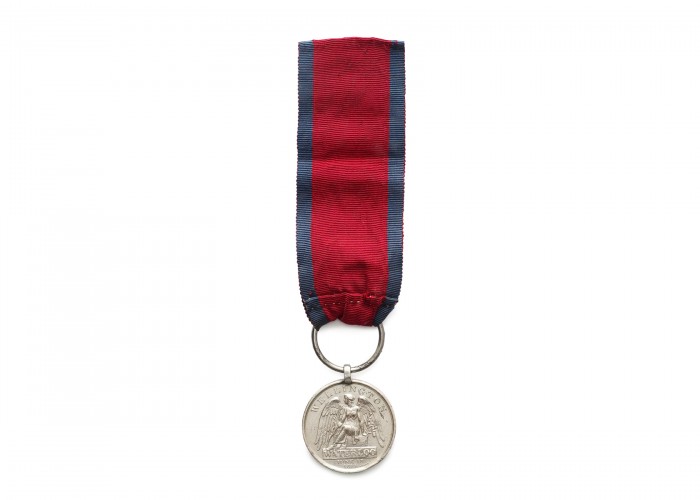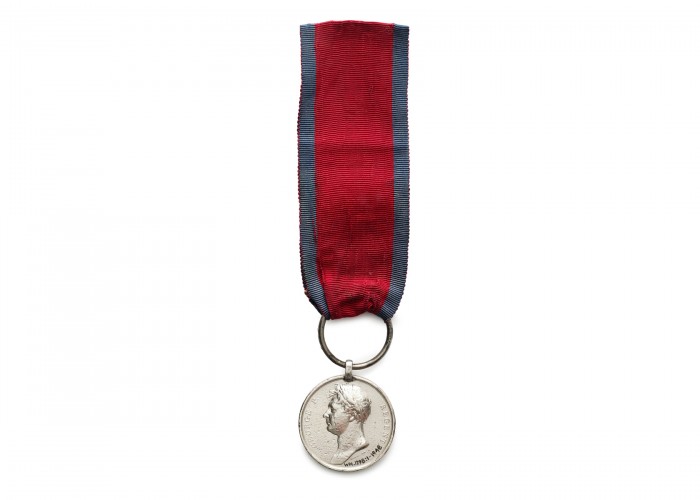Duke of Wellington’s Waterloo Medal
The Waterloo medal was the first medal issued to all British soldier present at this battle and the actions at Quatre Bras and Ligny two days before. In contrast to earlier medals – like Wellington’s Peninsula Cross in gold, visible below – the Waterloo Medal was the same for the most junior private soldier as for the British Commander-in-Chief. This tradition of campaign medals continues in the British Army to this day.
Previously only officers had received medals for their service. The Waterloo medal was awarded to British troops and to members of the King’s German Legion, which was a component part of the British Army at this time. It is believed that the Duke of Wellington recommended the commemoration of the battle in this form about 10 days after the event.
It is believed that the Duke of Wellington obtained several medals to avoid moving medals between his different uniforms. The exact number is unsure. One of his medals with the naming ‘Field Marshall the Duke of Wellington K.G. and G.C.B’ was sold in the Mackenzie collection sale of 1934. It realised £10 15s. (£10.75). It is debatable as to what it might make now when Waterloo medals to private soldiers may fetch £2000 or more, depending upon the regiment.
The naming of the medal was a new development. It was the first time that a recipient’s name was impressed around the edge by a specially adapted coinage machine.
There was great resentment from those soldiers who had fought in earlier campaigns, mainly in the Peninsula, who received neither a medal nor the 2-year pension enhancement given to Waterloo men These other veterans had to wait for until 1847 for their medal.
Waterloo brought the Revolutionary and Napoleonic Wars to an end after more then 20 years of conflict in Europe. The battle brought over 50 years of peace and stability and decided the shape of the European continent for years to come. It was 99 years before there was another pan-European war.
-
Use this image
You can download and use the high resolution image for use in a non-profit environment such as a school or college, but please take note of the license type and rights holder information below
- Rights Holder: English Heritage / Apsley House. Photography Relic Imaging Ltd.
- License Type: Creative Commons
Find it here
This object is in the collection of Apsley House – English Heritage









